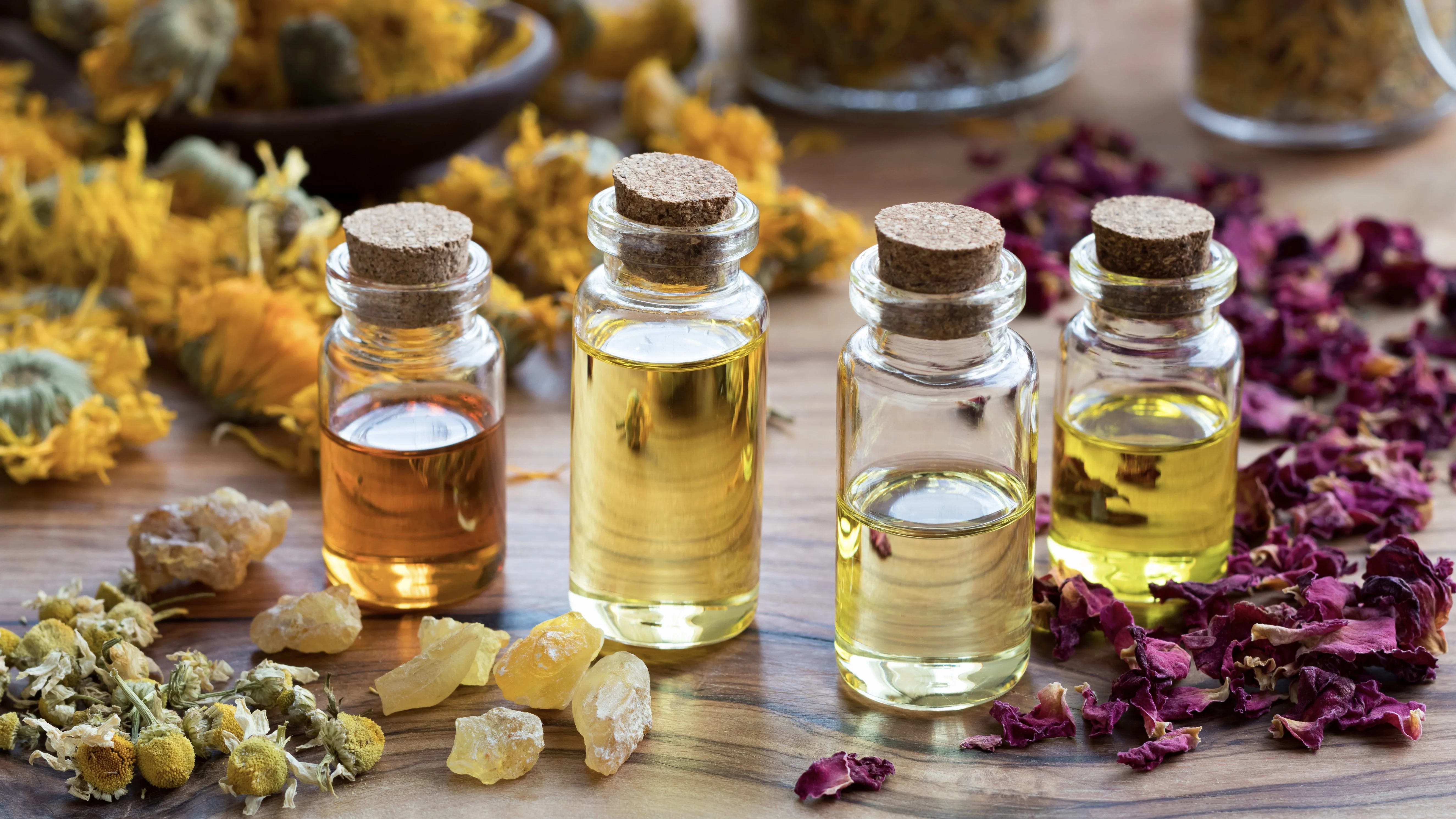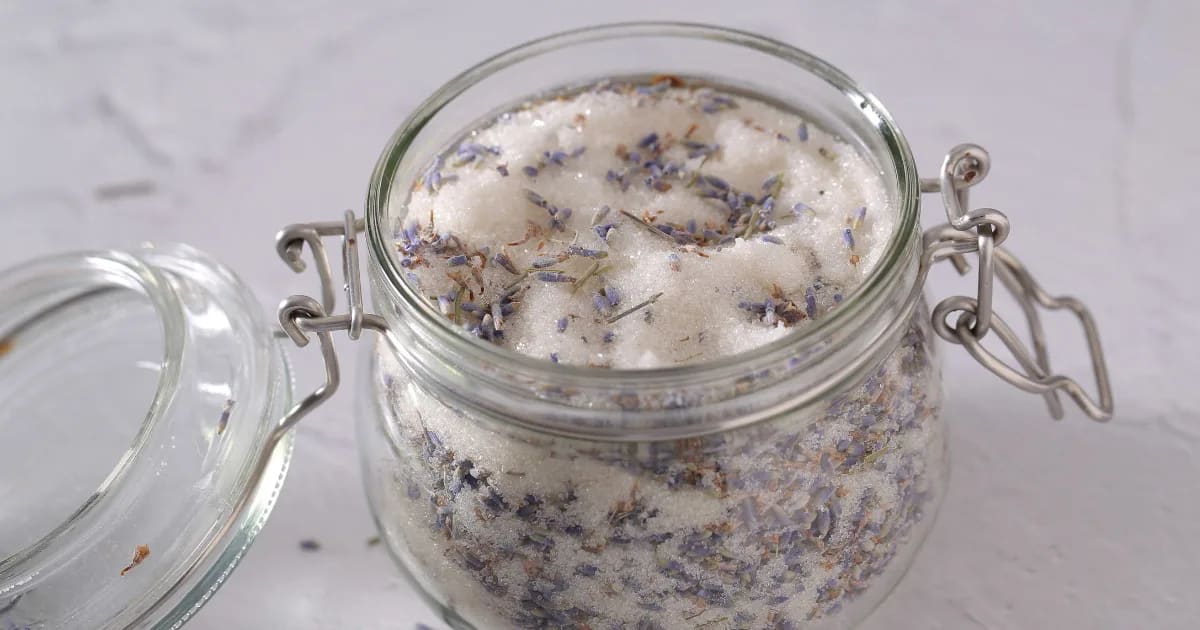Immune System: Winter Wellness Essentials & Aromatherapy Remedies for Cold & Flu Season

Natural Winter Wellness Starts Here
As the winter chill sets in, so does the season of sniffles, coughs, and flu. It's not uncommon to experience a weak immune system at this time of year.
The immune system is your body’s natural defense against harmful invaders like bacteria, viruses, and other agents of infection. While it’s important to support your immune health throughout the year, it becomes even more critical in the cold, dark days of winter.
Aromatherapy—the use of essential oils derived from plants—has been shown to stimulate immune function, and to support health in ways that boost immune response (such as reducing stress).
In this post, you’ll get an overview of the immune system, and how essential oils can support you through cold and flu season—including which oils to use, why they work, and 3 recipes you can make to protect your health this season.
By understanding how the immune system functions and incorporating practical tools like aromatherapy into your wellness routine, you can strengthen your body’s defenses and enjoy a healthier, more resilient season.
The Immune System: An Overview for Aromatherapists
The immune response is a marvel of biological engineering, designed to defend the body against harmful invaders while maintaining harmony within. It includes both passive immunity and acquired immunity. Passive immunity refers to the protection we gain through the transfer of antibodies, either from our mother during pregnancy or through medical interventions like antibody-rich blood products. Acquired immunity develops after exposure to a pathogen or vaccine.
Let’s explore two main components of the immune system, and the roles of key cells in protecting your health.
Key Components of the Immune System
Innate Immune System
The innate immune system is your body’s first line of defense, acting as a rapid-response against pathogens. Innate immunity relies on physical barriers like the skin and mucous membranes, as well as immune cells such as macrophages, and dendritic cells, which identify and eliminate threats. This system doesn’t target a specific pathogen, but provides a broad, immediate response to any invader it encounters.Adaptive Immune System
The adaptive immune system is more sophisticated. It learns to recognize and remember a specific pathogen. When a new pathogen or infectious disease enters the body, specialized lymphocytes—T cells and B cells—kick into action. An antibody is produced to fight that pathogen in future battles. This system takes longer to respond but provides long-term immunity, such as that achieved through a vaccine.
Immune System Cells and Their Roles
In response to a threat, the immune system calls up a diverse team of specialized cells, each with a unique role:
T Lymphocytes
Cytotoxic T Cells (aka Killer T Cells): Part of the adaptive immune system, a cytotoxic T cell will directly attack and destroy an infected or cancerous cell.
Helper T Cells: Another type of T lymphocyte, a helper T cell will coordinate the immune response by activating other cells, like B lymphocytes and cytotoxic T cells.
B Lymphocytes: A B lymphocyte, or B cell, produces antibodies that neutralize pathogens or tag them for destruction by other immune cells, such as macrophages.
Dendritic Cells: A dendritic cell acts as a sentinel, identifying pathogens and presenting them to T cells to trigger an adaptive immune response.
Natural Killer Cells: Part of the innate immune system, a natural killer cell can identify and eliminate an abnormal or infected cell, including those showing signs of cancer.
Together, these cells create a dynamic, multi-layered defense system, protecting you from infections, diseases, and even cancer cells. The immune system is elegantly responsive, and we can support it through lifestyle choices and complementary practices like aromatherapy.
Aromatherapy Remedies for Winter Wellness
Along with fighting microbes and boosting the immune response, essential oils can also support holistic wellness in ways that contribute to overall immune strength, such as:
Healthy Sleep: Adequate sleep is essential for adaptive immunity. It’s during deep sleep that your body produces cytokines—proteins that regulate the immune response.
Stress Relief: Chronic stress weakens the immune system by increasing cortisol levels, which can suppress the production of lymphocytes and white blood cells. Many essential oils (including lavender, Lavandula angustifolia) can measurably ease stress and anxiety.
Lymph Support: Certain essential oils, including lemon (Citrus limon), stimulate the lymphatic system and lymphoid organs, helping to cleanse the blood, and move toxins and infection out of the body. Supporting the circulation of lymphatic fluid also encourages the proper functioning of lymphocytes.
When we use essential oils for immune support, we can take a “direct” approach—using oils to boost white blood cells and fight infection. Some (such as cedarwood, Juniperus virginiana) support natural killer cells. Others (including tea tree, Melaleuca alternifolia) can get more lymphocytes moving through the blood. But it’s also important to think holistically, nourishing ourselves in ways that allow our body’s immune response to thrive—like making sure we get enough sleep for our body to produce healing cytokines.
In this way, we support both adaptive and innate immunity.
There are a lot of essential oils that support immunity in different ways. In this post, we’ll feature five of our favorites.
5 Key Essential Oils for Immune Support
1. Tea Tree Oil (Melaleuca alternifolia)
Renowned for its potent antimicrobial properties, tea tree oil helps fight pathogens. Its versatility makes it a go-to for cleaning surfaces and purifying the air, as well as for topical use.
Why it works: Tea tree oil’s main component is terpinen-4-ol, which has potent antibacterial, antiviral, and antifungal actions (Carson, Hammer, and Riley 2006). It's most potent against “free viruses,” which have not yet invaded a cell. It's also known to activate white blood cells and lymphocytes (Budhiraja et al. 1999).
Additional benefits: Clears the sinuses, supports easy breathing, awakens the mind.

2. Lavender Oil (Lavandula angustifolia)
While it’s best known for relaxation, lavender oil also supports immune response by easing stress—a key factor in preventing immune deficiency. Its calming scent can encourage restorative sleep, allowing your body to activate healing cytokines.
Why it works: Lavender is chock full of linalool, a monoterpene with antibacterial (Fisher and Phillips 2006), antifungal (Nakahara et al. 2013), and antiviral actions (especially against the influenza virus) (Choi 2018). Plus, in studies lavender has performed as well as benzodiazepines in soothing anxiety (Woelk and Schläfke 2010).
Additional benefits: Supports relaxation and sleep, eases anxiety, reduces inflammation.

3. Lemon Oil (Citrus limon)
Lemon oil is rich in antioxidants and has invigorating properties that can boost innate immunity, as well as a component that supports adaptive immunity.
Why it works: d-Limonene, the primary component found in citrus oils, has powerful anti-infectious qualities! It’s been shown to fight a wide variety of bacteria, fungi, and viruses (Lang and Buchbauer, 2012; Corrêa et al. 2023). It can also boost white blood cell count and lymphocytes, antibody production, and bone marrow cellularity. (Bone marrow cellularity is an indicator of how well bone marrow can produce immune cells) (Raphael and Kuttan, 2003). Learn more about d-limonene here.
Additional benefits: Soothes anxiety, boosts the mood, clears the mind, supports easy breathing, encourages lymph movement and detox.

4. Cedarwood Oil (Juniperus virginiana)
Grounding and soothing, cedarwood oil supports respiratory health and immune resilience. Its warm, woodsy aroma is excellent for calming the nervous system, which in turn enhances overall immune response.
Why it works: Wood essential oils such as cedarwood are known as phytoncides, enhancing the activity of natural killer cells (which destroy unhealthy, diseased cells, such as cancer) (Li et al. 2006).
Additional benefits: Eases stress and anxiety, supports sleep, and calms inflammation.

5. Thyme ct Thymol Oil (Thymus vulgaris ct thymol)
This variety of thyme oil is a powerhouse for immune support thanks to its high thymol content. It’s so potent that it can irritate skin and mucous membranes if not safely diluted in a carrier. For topical application, I stick to a 1% dilution (5–6 drops in 1 oz/30 ml of carrier). There are also gentler varieties of thyme you can blend with.
Why it works: Thymol has powerful antimicrobial actions against a wide spectrum of bacteria, viruses, and fungi (Rota et al. 2008, Astani and Schnitzler 2010). Plus, it helps modulate the immune response (Gholijani and Amirghofran 2016).
Additional benefits: Calms the urge to cough, reduces inflammation, and clears the head.

3 DIY Aromatherapy Recipes for Immunity in Cold and Flu Season
Tea Tree Immune-Boosting Diffuser Blend
One of the best strategies we can take to prevent infection in cold and flu season is to inhale antimicrobial essential oils. When a virus is inhaled, its first point of contact with the body is through the nose. If we can neutralize or destroy as many airborne virus particles as possible before they invade healthy cells, we can reduce our risk of infection.
This blend purifies the air with potent antimicrobials, and includes two oils that support white blood cells (including lymphocytes), boosting adaptive immunity.
If you don’t have an essential oil diffuser, you can drop these oils on a piece of cotton and place it in a small bowl, to diffuse into the air.
Ingredients
4 drops Tea Tree Oil (Melaleuca alternifolia)
3 drops Lemon Oil (Citrus limon)
2 drops Thyme ct thymol Oil (Thymus vulgaris ct thymol)
Fresh Cedar Clear Breathing Inhaler
Using an inhaler introduces antimicrobial, immune-boosting components directly to the “scene of the action”—your nose! This inhaler is perfect after you’ve been exposed to sickness, or when you’re actively fighting infection. Along with destroying microbes, it helps calm inflammation and clear your breathing.
You’ll need a blank aromatherapy inhaler to make this recipe.
Ingredients
7 drops Cedarwood Oil (Juniperus virginiana)
6 drops Tea Tree Oil (Melaleuca alternifolia)
2 drops Thyme ct thymol Oil (Thymus vulgaris ct thymol)
Directions
Add the essential oils to the cotton wick of an inhaler.
Assemble the inhaler and cap it tightly.
Inhale deeply as needed to open your breath, fight infection, and support immunity.
Lavender Stress Shield Immunity Roll-On
Designed to shield your energy and support immune health, this portable ally is infused with essential oils known for calming anxiety and fighting infection. Roll it on whenever you need a boost of confidence, resilience, or a little extra armor for your day.
You’ll need a 10 ml roller ball bottle for this recipe.
Ingredients
10 ml Sweet Almond Oil (Prunus Dulcis)
3 drops Lavender Oil (Lavandula angustifolia)
2 drops Lemon Oil (Citrus limon)
1 drop Cedarwood Oil (Juniperus virginiana)
Directions
Add the essential oils to a 10 ml roll-on bottle.
Fill the rest of the bottle with sweet almond oil.
Apply to your wrists, neck, and chest as needed to protect yourself from infection.
Balancing Holistic Remedies with Medical Treatment
Holistic remedies, such as essential oils, are highly effective tools for supporting the immune system, as research has consistently shown. Their ability to nurture and strengthen the body naturally makes them a vital part of many wellness routines. At the same time, there are situations where traditional medical treatments play a critical role, and that’s something to be embraced. The beauty of these approaches lies in their ability to work together—each offering unique benefits that, when combined, can create a more complete and effective path to health.
For those managing complex conditions, such as autoimmune diseases, it's especially important to adopt a collaborative approach. Essential oils and aromatherapy can provide remarkable support, enhancing well-being and complementing medical care where needed. Open communication with knowledgeable healthcare providers allows you to blend these approaches harmoniously, ensuring you benefit from the strengths of both holistic and conventional treatments. Together, they work beautifully to nurture your health on every level.
Complimentary Download: Winter Immunity Booster
Colds, flus, and respiratory bugs thrive as the temperatures drop. This complimentary PDF guide is here to help you stay ahead of the season naturally!
You’ll discover 5 simple recipes to help protect against infection during cold and flu season. Each blend highlights powerful essential oils known for immune-boosting and respiratory-supporting properties. These recipes are backed by research and crafted for effectiveness.
Here’s a sneak peek at what you’ll find inside:
Why cold weather challenges the immune system (and what you can do about it).
In-depth profiles of five essential oils, including their researched benefits and tips for blending.
A curated list of additional oils to expand your toolkit for natural wellness.
5 Simple DIY recipes to target specific aspects of immunity.
This guide serves as both a collection of recipes and an introduction to confidently supporting your immune response with aromatherapy. Whether you’re new to essential oils or a seasoned aromatherapist, you’ll gain valuable insights into building your own winter wellness kit.
Download your free guide today and take the first step toward a healthier, happier cold and flu season.
My Takeaway
Winter doesn’t have to be a season of sniffles and sluggishness. With the right tools, you can stay ahead of the challenges and keep your immune system strong and resilient. Essential oils offer a natural, effective way to support your health and bring comfort during cold and flu season.
By understanding how to use these powerful oils for respiratory and overall wellness, you’re proactively creating a healthier, more vibrant season for yourself and your loved ones. So feel free to experiment with the recipes, and let these powerful natural remedies become a staple in your winter wellness routine. Here’s to a refreshing, healthy, and thriving winter!
REFERENCES
Astani A, Reichling J, Schnitzler P (2010) Comparative study on the antiviral activity of selected monoterpenes derived from essential oils. Phytotherapy Research 24(5):673-679
Budhiraja SS, Cullum ME, Sioutis SS, Evangelista L, Habanova ST. (1999). Biological activity of Melaleuca alternifola (Tea Tree) oil component, terpinen-4-ol, in human myelocytic cell line HL-60. Journal of Manipulative and Physiological Therapeutics. 1999 Sep;22(7):447-53. doi: 10.1016/s0161-4754(99)70033-3. PMID: 10519561.
Carson, C. F., Hammer, K. A., & Riley, T. V. (2006). Melaleuca alternifolia (tea tree) oil: a review of antimicrobial and other medicinal properties. Clinical microbiology reviews, 19(1), 50-62.
Choi H. J. (2018). Chemical Constituents of Essential Oils Possessing Anti-Influenza A/WS/33 Virus Activity. Osong public health and research perspectives, 9(6), 348–353. https://doi.org/10.24171/j.phrp.2018.9.6.09
Corrêa, A. N. R., Weimer, P., Rossi, R. C., Hoffmann, J. F., Koester, L. S., Suyenaga, E. S., & Ferreira, C. D. (2023). Lime and orange essential oils and d-limonene as a potential COVID-19 inhibitor: Computational, in chemico, and cytotoxicity analysis. Food bioscience, 51, 102348. https://doi.org/10.1016/j.fbio.2022.102348
Fisher, K., & Phillips, C. A. (2006). The effect of lemon, orange and bergamot essential oils and their components on the survival of Campylobacter jejuni, Escherichia coli O157, Listeria monocytogenes, Bacillus cereus and Staphylococcus aureus in vitro and in food systems. Journal of Applied Microbiology, 101(6), 1232-1240.
Gavliakova S., Biringerova, Z., Hanuskova, E., Buday, T., Poliacek, I., and Jana, P. (2013). Urge to cough is significantly abolished by nasal thymol application. European Respiratory Journal. 42(57): P1594
Gholijani, N., & Amirghofran, Z. (2016). Effects of thymol and carvacrol on T-helper cell subset cytokines and their main transcription factors in ovalbumin-immunized mice. Journal of immunotoxicology, 13(5), 729–737. https://doi.org/10.3109/1547691X.2016.1173134
Huang, D., Taha, M. S., Nocera, A. L., Workman, A. D., Amiji, M. M., & Bleier, B. S. (2023). Cold exposure impairs extracellular vesicle swarm–mediated nasal antiviral immunity. Mechanisms of Allergy/Immunology, 151(2), 509–525.e8. https://doi.org/10.1016/j.jaci.2022.09.037
Lang, G. and Buchbauer, G. (2012) A review on recent research results (2008-2010) on essential oils as antimicrobials and antifungals. A review. Flavour and Fragrance Journal 27, 13-39.
Lappas, C. M., & Lappas, N. T. (2012). D-Limonene modulates T lymphocyte activity and viability. Cellular immunology, 279(1), 30–41. https://doi.org/10.1016/j.cellimm.2012.09.002
Li, Q., Nakadai, A., Matsushima, H., Miyazaki, Y., Krensky, A. M., Kawada, T., & Morimoto, K. (2006). Phytoncides (wood essential oils) induce human natural killer cell activity. Immunopharmacology and immunotoxicology, 28(2), 319-333.
Nakahara, K., Alzoreky, N. S., Yoshihashi, T., Nguyen, H. T., & Trakoontivakorn, G. (2013). Chemical composition and antifungal activity of essential oil from Cymbopogon nardus (citronella grass). Japan Agricultural Research Quarterly: JARQ, 37(4), 249-252.
Raphael TJ, Kuttan G. (2003) Immunomodulatory activity of naturally occurring monoterpenes carvone, limonene, and perillic acid. Immunopharmacol Immunotoxicol. May;25(2):285-94. doi: 10.1081/iph-120020476. PMID: 12784919.
Rota, M.C., Herrera, A., Martinez, R.M., Sotomayor, J.A. and Jordán, M.J. (2008) Antimicrobial activity and chemical composition of Thymus vulgaris, Thymus zygis and Thymus hyemalis essential oils. Food Control 19, 681-687
Woelk, H. and Schläfke, S. (2010) A multi-center, double-blind, randomised study of the Lavender oil preparation Silexan in comparison to Lorazepam for generalized anxiety disorder. Phytomedicine 17, 2, 94-99.
Zhang K, Yao L. (2018) The anxiolytic effect of Juniperus virginiana L. essential oil and determination of its active constituents. Physiology & Behavior. 2018 May 15;189:50-58. doi: 10.1016/j.physbeh.2018.01.004. Epub 2018 Jan 8. PMID: 29326032.






